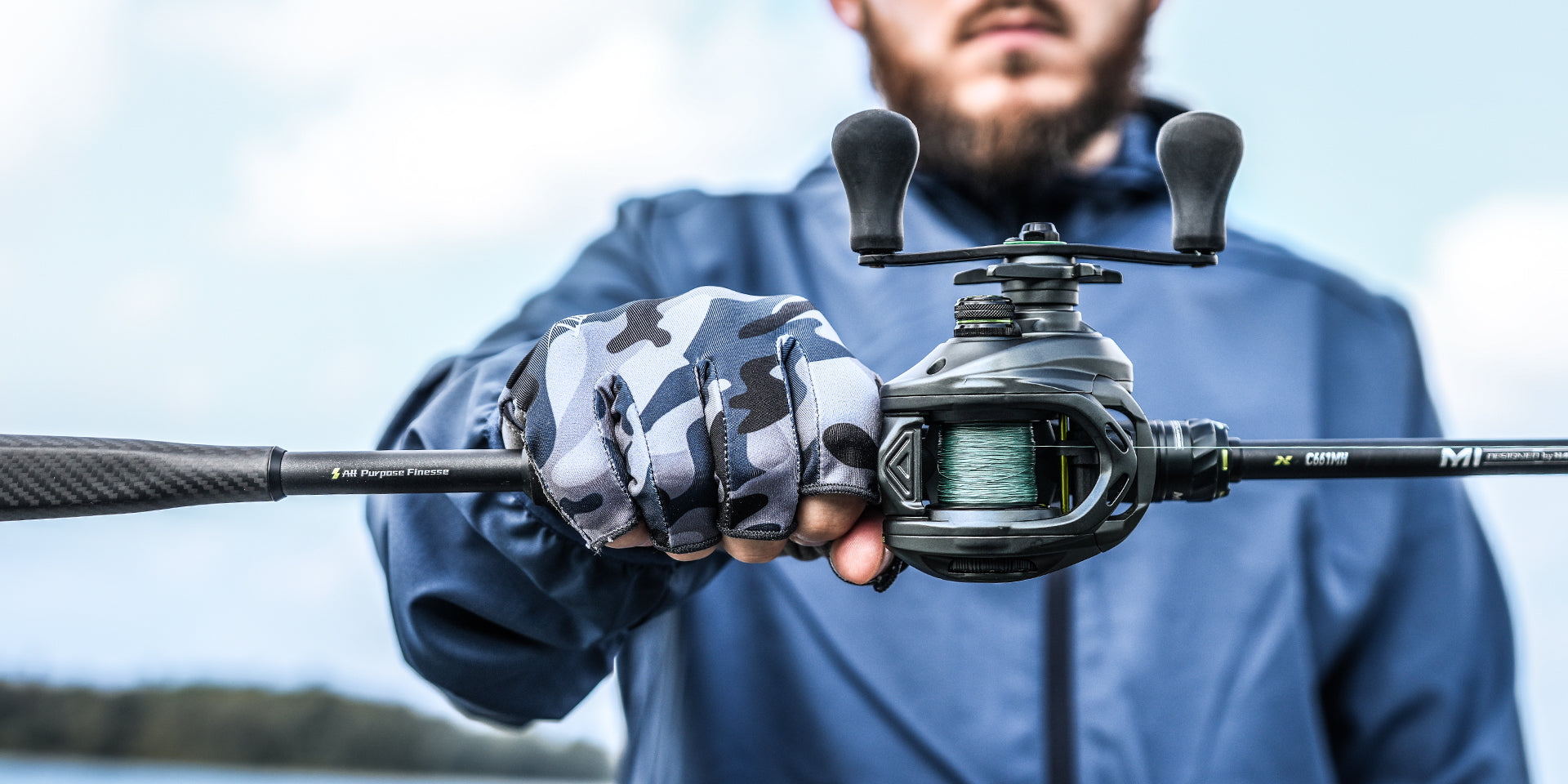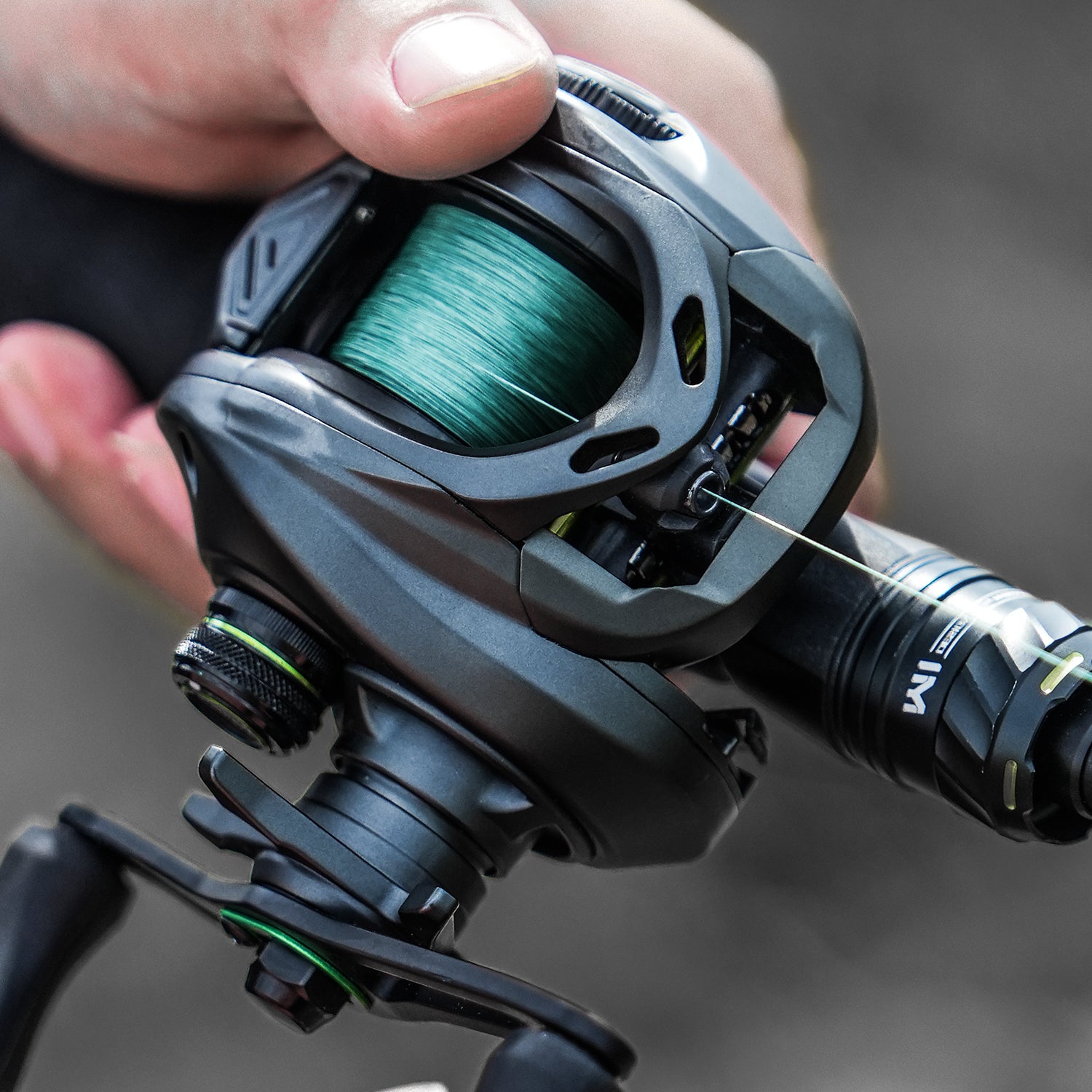As winter's grip begins to ease and the earliest rumors of spring begin to blow, bass fishermen across the world begin to experience that familiar surge of excitement. Early spring is the pivotal period on the bass angler's calendar—a time of change, opportunity, and elevated activity. All season long, bass begins moving from deep overwintering places toward shallow spawning locations in anticipation of longer days and warmer, rising water temperatures. This natural occurrence gives a unique window of opportunity to anglers who understand how to capitalize on pre-spawn feeding habits. This article talks about the most effective baits to use in early spring, sharing proven strategies to increase your success during this active early spring season.
Bass Behavior That Drives Early Spring Success
1. Transition from Winter to Spring
As water temperatures rise from the low 40s into the 50s, bass metabolism shifts from its winter slowdown into a higher gear. This isn't an overnight process—it's a regional-dependent, depth-dependent, and weather-dependent process. In early spring, bass will typically begin staging near pre-spawn areas, perched between their deep-winter sanctuaries and shallow spawning flats.
The magic number most anglers wait for is 50 degrees Fahrenheit. When the water temperature remains consistently above this point, bass activity increases noticeably, and feeding becomes more aggressive.
2. Feeding Patterns
Early spring bass are energy-acquisition oriented. After having spent winter months with reduced feeding under cold water, they now face the energy-spend process of spawning. Their biological requirement compels them to feed opportunistically on whatever food they find available, including:
- Crawfish emerging from winter dormancy
- Baitfish schools moving into shallower waters
- Early hatching insects and their larvae
The longer daylight time also prolongs the feeding windows, giving more quality-time chances to fishermen during the day. Bass typically feeds most energetically during midday periods when water temperatures rise to their daily peak.

What Factors Influence Bait Choice in Early Spring
1. Water Temperature
Water temperature is the primary indicator of bass activity levels in early spring and is a direct factor in how fast you should present your baits:
- Below 45°F: Extremely slow presentations with minimal movement
- 45-52°F: Moderate retrieve speeds with occasional pauses
- Above 52°F: More aggressive presentations become viable, especially during warm afternoons
Water temperatures can vary significantly within the same body of water. South-facing beaches, shallow bays, and dark-bottomed holes will warm up faster and can have more active fish.
2. Water Clarity
Early spring often brings rain and runoff to many watersheds, affecting water clarity and, consequently, your bait selection:
- Stained/Muddy Water (visibility less than 1 foot): Opt for baits with strong vibration, larger profiles, and high-contrast colors like black/blue, chartreuse, or orange.
- Moderately Clear (visibility 1-3 feet): Medium-sized baits in natural colors with accents work well.
- Clear Water (visibility over 3 feet): Downsize your offerings and choose realistic, natural patterns that won't spook wary bass.
3. Weather Conditions
Early spring weather is notoriously fickle, with conditions often changing dramatically within a single day:
- Stable Weather Periods: Bass tend to be more predictable and active during consistent weather patterns.
- Cold Fronts: These can push bass deeper and make them less aggressive—downsize your offerings and slow your presentation.
- Warming Trends: Multi-day warming patterns often produce the best fishing of early spring, allowing for more aggressive techniques and faster retrieves.
Best Baits for Early Spring Bass Fishing
1. Jerkbaits
Description
Hard-bodied, minnow-shaped lures typically run at depths of 3-6 feet with a slender profile and multiple treble hooks. Available in floating, suspending, and sinking varieties, with suspending models proving particularly effective in early spring conditions.
Why They Work
Jerkbaits excel in cool water because they enable anglers to imitate wounded or dying baitfish—an easy meal for energy-conscious pre-spawn bass. The erratic, start-and-stop action triggers reaction strikes even from less active fish. Their effectiveness peaks in clear to slightly stained water when bass are suspending at mid-depths.
Tactics
The classic "jerk-jerk-pause" cadence forms the foundation of effective jerkbait fishing, but the duration of the pause is critical in early spring:
- Water temps 40-45°F: Extremely long pauses of 10-30 seconds
- Water temps 45-50°F: Moderate pauses of 5-10 seconds
- Water temps 50-55°F: Shorter pauses of 3-5 seconds
Target points, channel swings, submerged vegetation edges, and riprap banks. Keep your rod tip down during the retrieve to maintain proper running depth.
2. Spinnerbaits
Description
These versatile lures feature a wire frame with spinning metal blades attached to the upper arm and a skirted hook on the lower arm. Available in various weights, blade configurations, and skirt colors to match different conditions.
Why They Work
Spinnerbaits create both flash and vibration—two key attractors for early spring bass. They efficiently cover water, allowing anglers to locate active fish quickly. Their weedless design permits fishing around the emerging vegetation and woody structure that often holds early spring bass.
Tactics
In early spring, slow-rolling spinnerbaits often outperform faster retrieves:
- Cast parallel to depth transitions, especially those adjacent to spawning flats.
- Allow the bait to sink toward the bottom before beginning a slow, steady retrieve.
- Maintain bottom contact periodically, creating puffs of sediment that add to the bait's attractiveness.
- Use tandem Colorado blades in stained water for maximum vibration, or willow leaf blades in clearer conditions for flash without excessive vibration.
3. Crankbaits
Description
Crankbaits are a large family of diving, wobbling hardbaits designed to imitate an assortment of forage. Two crankbait subtypes during early spring fishing are deserving of special note:
- Lipless crankbaits: Compact, slab-sided lures with internal rattles that sink and can be retrieved at various depths
- Square-bill crankbaits: Shallow-running plugs with a square diving lip ideal for deflecting off cover
Why They Work
Crankbaits trigger reaction strikes with their wobble, vibration, and propensity to deflect irregularly off cover. Lipless versions rule over underwater grass, and square-bills rule along wood and rock cover. Both versions allow anglers to cover water efficiently while remaining in contact with productive depth zones.
Tactics
For lipless crankbaits, the "yo-yo" retrieve proves deadly in early spring:
- Cast over submerged grass or along depth transitions.
- Allow the bait to sink to the desired depth.
- Raise your rod tip to lift the bait, then lower it to allow the lure to flutter down.
- Most strikes occur during the falling phase.
For square-bills:
- Focus on shallow cover like laydowns, stumps, and dock pilings.
- Use a moderate, steady retrieve that allows the bait to occasionally contact structure.
- When the bait deflects off cover, momentarily pause your retrieve—this often triggers following fish to commit.
4. Soft Plastics
Types
The soft plastics category encompasses countless designs, but several shine consistently in early spring conditions:
- Finesse worms (4-6 inches)
- Creature baits with multiple appendages
- Soft jerkbaits and flukes
- Craw imitations
Why They Work
Soft plastics offer the ultimate in versatility and natural feel in water. Their soft action is most appealing to less aggressive bass, and their rigging versatility allows for adjustment to various types of cover and depth. Natural feel of soft plastic will often convince anxious early spring bass to hold on longer, which increases the ratio of hookups.
Tactics
Rigging options for early spring conditions include:
-
Texas Rig: The most versatile setup, allowing weedless presentation with adjustable weight.
- Use 1/8 to 1/4 oz weights in shallow water
- Switch to 3/8 or 1/2 oz for deeper presentations or current
-
Carolina Rig: Excellent for maintaining bottom contact while giving the bait more freedom of movement.
- Use longer leaders (18-24 inches) in clear water
- Shorten leaders (12-15 inches) in stained conditions
-
Ned Rig: Perfect finesse presentation for tough conditions or pressured fish.
- Focus on rocky structure and transition areas
- Fish with subtle hops and long pauses
-
Wacky Rig: Triggers bite when other presentations fail due to their unique falling action.
- Particularly effective around docks, brushpiles, and isolated cover
- Add a small nail weight for deeper presentations
5. Jigs
Description
A lead head with a weed guard and synthetic hair or silicone skirt, typically paired with a soft plastic trailer. Early spring calls for jigs in the 3/8 to 1/2 oz range in colors that mimic crawfish—browns, oranges, greens, and blacks.
Why They Work
Jigs excel at mimicking crawfish, one of the main dietary sources of early spring bass. Their diminutive size, paired with a restrained presentation, handily suits up the lowered metabolic level of springtime bass. Jigs will also be readily pinpointed inside of the thick cover where largemouth females do settle up awaiting spawn.
Tactics
Effective jig presentations for early spring include:
-
Dragging: Slowly pull the jig across the bottom, maintaining constant contact with the substrate.
- Focus on transition areas between deep winter holes and spawning flats
- Pay special attention to the first drops adjacent to shallow flats
-
Pitching/Flipping: Make precise presentations to visible cover.
- Target laydowns, dock posts, and other vertical structure
- Allow the jig to fall on a slack line, watching for any movement indicating a strike
-
Swimming: Retrieve the jig steadily through the water column.
- Effective around submerged vegetation or over rocky flats
- Use a trailer with active appendages to enhance the swimming action

How to Match Bait to Conditions
1. Adjust to Water Clarity
Water clarity fluctuates dramatically during early spring, requiring tactical adjustments:
- Muddy Water Strategy: In visibility less than 6 inches, focus on high-vibration baits like chatterbaits and lipless crankbaits in high-contrast colors.
- Stained Water Approach: When visibility reaches 1-2 feet, most reaction baits become effective. Size up slightly and choose colors with moderate contrast.
- Clear Water Technique: With visibility over 3 feet, finesse becomes crucial. Downsize your offerings, use fluorocarbon leaders, and opt for translucent or natural colors.
2. Adapt to Weather
Early spring weather patterns require constant adaptation:
- Cold Fronts: When temperatures drop suddenly, switch to finesse presentations like drop-shot rigs and Ned rigs, focusing on deeper structure adjacent to spawning areas.
- Warming Trends: During multi-day warming patterns, move progressively shallower and increase your retrieval speed as bass become more aggressive.
- Wind: Moderate wind creates opportunities on otherwise tough days by positioning baitfish and reducing fishing pressure. Use the wind to your advantage with noise-producing baits like spinnerbaits and crankbaits.
3. Have an Open Mind
One of the key early spring fishing skills is flexibility. Carry a variety of different baits and be prepared to experiment throughout the day. Bass location and activity will change by the hour during this period of transition. Early spring requires an open mind and a willingness to experiment.
Additional Tips for Early Spring Success
1. Location Selection
Focus your efforts on these high-percentage areas:
- Main Lake Points: Especially those with access to both deep water and spawning bays
- Channel Swings: Where creek channels cut close to shorelines
- Secondary Points: Inside major coves and creek arms
- Riprap Banks: Which absorb heat and warm faster than surrounding areas
- North Shorelines: Which receive maximum sun exposure in the northern hemisphere
2. Time of Day Considerations
While conventional wisdom suggests early and late periods as prime fishing times, early spring often breaks this rule:
- Morning: Often slower due to cooler water temperatures
- Mid-day to Afternoon: Prime time as water temperatures reach their daily peak
- Evening: Can remain productive if the day was warm and stable
3. Equipment Suggestions
Prepare your tackle for the unique demands of early spring fishing:
- Rods: Medium to medium-heavy actions provide versatility for most techniques
- Reels: 6.1:1 or 7.1:1 gear ratios allow speed adjustments while maintaining power
- Line: Fluorocarbon in 10-15 lb test handles most situations, with braid as a backup for heavy cover
Don't Miss Your Early Spring Bass Opportunity!
Early spring is a good window for bass fishing with actively feeding fish before spawning. It relies on flexibility with fluctuating conditions by equilibrating baits with environments and developing patterns through successful catch. Take note of all the important details when you land a bass: water temperature, depth, structure, bait, and retrieval rate. These details offer repeatable patterns for ongoing success. What early spring techniques are working for you? Which presentations yield your finest early-spring catches? Come on over and assist other anglers in realizing this thrill period of pre-spawning season!







